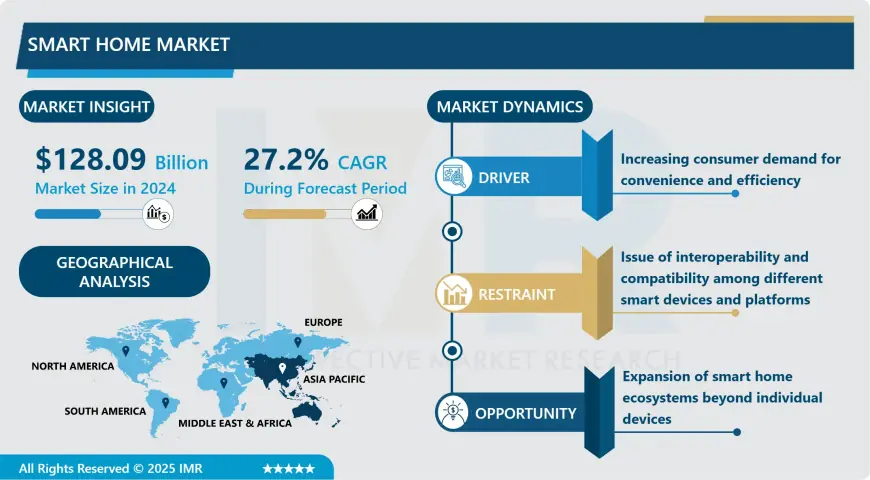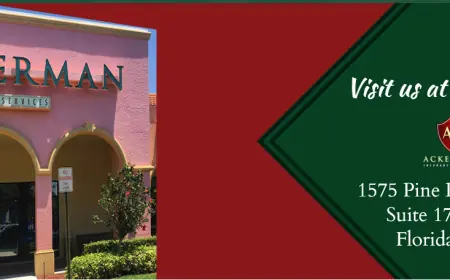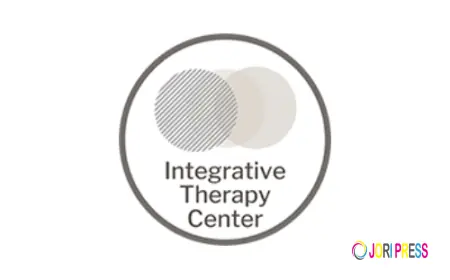Smart Home Market, Growth, Worth, Trends, Scope, Impact & Forecast Till 2032
A Smart Home refers to a residence equipped with interconnected devices and systems that can be remotely controlled and automated to enhance convenience, safety, and energy efficiency.

A Smart Home refers to a residence equipped with interconnected devices and systems that can be remotely controlled and automated to enhance convenience, safety, and energy efficiency. These devices are typically connected through a central hub or network, often managed via smartphone apps or voice assistants like Alexa or Google Assistant. Examples include smart thermostats, lighting, security cameras, door locks, appliances, and entertainment systems. By enabling seamless communication between devices and users, smart homes aim to create an integrated, efficient, and personalized living environment that significantly improves quality of life.
Smart Home Market Size Was Valued at USD 100.7 Billion in 2023 and is Projected to Reach USD 877.8 Billion by 2032, Growing at a CAGR of 27.2% From 2024-2032.
Some of the Top Leading Key Players:
ABB Ltd. (Switzerland), Amazon (USA), Apple (USA),Google (USA), Honeywell International Inc. (USA), Johnson Controls International plc (Ireland), Lenovo Group Limited (China), LG Electronics (South Korea), Philips Lighting (Netherlands), Samsung Electronics (South Korea), Schneider Electric (France), Siemens AG (Germany), Sony Corporation (Japan), TP-Link Technologies CoLtd. (China), Xiaomi Corporation (China)
IMR posted new studies guide on Smart Home Market Insights with self-defined Tables and charts in presentable format. In the Study you may locate new evolving Trends, Drivers, Restraints, Opportunities generated via targeting market related stakeholders. The boom of the Smart Home marketplace became specifically driven with the aid of the growing R&D spending internationally.
Download Sample Report PDF (Including Full TOC, Table & Figures) @
https://introspectivemarketresearch.com/request/17540
Smart Home Market Synopsis:
The Smart Home marketplace studies have a look at ensures the highest level of accuracy and reliability as we exactly study the general industry, masking all the market fundamentals. By leveraging a wide range of number one and secondary resources, we set up a sturdy basis for our findings. Industry-widespread tools like Porter's Five Forces Analysis, SWOT Analysis, pestle Analysis and Price Trend Analysis in addition enhance the comprehensiveness of our assessment. Our examine additionally discusses the entire Smart Home marketplace surroundings, explaining the various market stakeholders, their functions and interdependencies among them. Further, with an emphasis on complete segmentation evaluation and geographical coverage, the have a look at allows a profound expertise of nearby tendencies. Moreover, we discover outside factors presenting a comprehensive view of the market dynamics.
Segmentation Analysis:
Smart Home Market Global Industry Analysis and Forecast (2024-2032) by Products (Security & Access Controls, Lighting Control, Entertainment Devices, HVAC, Smart Kitchen Appliances, Home Appliances, Smart Furniture, Home Healthcare, Other Devices), Application (New Construction, Retrofit) and Region
Do you have any queries or specific requirements? Ask our industry expert
https://introspectivemarketresearch.com/inquiry/17540
Smart Home Market Dynamics and Factors:
A key trend in the smart home market is the increasing integration of artificial intelligence (AI) and machine learning (ML) technologies. These advancements enable devices to learn user behavior and preferences over time, making home automation systems more intelligent and personalized. Voice assistants from Amazon, Google, and Apple are evolving to better understand natural language and anticipate user needs by analyzing usage patterns and data. This not only enhances user convenience but also leads to smarter energy management and improved home security, thanks to more predictive and responsive features powered by AI and ML.
Regional Analysis
Asia-Pacific is Expected to Dominate the Market Over the Forecast period
Geographically, the distinctive analysis of consumption, revenue, market share, and growth rate of the subsequent areas:
- North America (U.S., Canada, Mexico)
- Eastern Europe (Russia, Bulgaria, The Czech Republic, Hungary, Poland, Romania, Rest of Eastern Europe)
- Western Europe (Germany, UK, France, Netherlands, Italy, Spain, Rest of Western Europe)
- Asia Pacific (China, India, Japan, South Korea, Malaysia, Thailand, Vietnam, The Philippines, Australia, New-Zealand, Rest of APAC)
- Middle East & Africa (Türkiye, Bahrain, Kuwait, Saudi Arabia, Qatar, UAE, Israel, South Africa)
- South America (Brazil, Argentina, Rest of SA)
Key Industry Developments in the Smart Home Market:
In October 2022, Google's assistant has been updated to include emoji support and voice-input message typing capabilities to enhance the user experience in messaging. The market growth is being significantly influenced by the rapid adoption of modern technologies, including the Internet of Things (IoT), blockchain, smart voice recognition, and AI.
Read Detailed Index of full Research Study:
https://introspectivemarketresearch.com/reports/smart-home-market/
Study Objectives of this report are:
- To study and analyze the global Smart Home market size (value and volume) by company, key regions/countries, products and application, history data from 2017 to 2023, and forecast to 2032.
- To understand the structure of Smart Home market by identifying its various subsegments.
- To share detailed information about the key factors influencing the growth of the market
- Focuses on the key global Smart Home manufacturers, to define, describe and analyze the sales volume, value, market share, market competition landscape, SWOT analysis and development plans in next few years.
- To analyze the Smart Home with respect to individual growth trends, future prospects, and their contribution to the total market.
- To project the value and volume of Smart Home submarkets, with respect to key regions (along with their respective key countries).
- To analyze competitive developments such as expansions, agreements, new product launches, and acquisitions in the market.
- To strategically profile the key players and comprehensively analyze their growth strategies.
Introspective Market Research is a trusted partner for comprehensive market research studies. We are committed to providing businesses worldwide with comprehensive market research studies that offer valuable insights and strategic guidance
With a precise examination of the overall industry, our Smart Home market report guarantees the highest level of accuracy and reliability. We establish a strong foundation for our findings by leveraging a wide range of primary and secondary sources. Enhancing the comprehensiveness of our evaluation, we utilize industry-standard tools such as Porter's Five Forces Analysis, SWOT Analysis, and Price Trend Analysis.
Key Questions Answered In The Report
- How much is the Smart Home Market worth?
- At what CAGR is the market projected to grow over the estimated period?
- What factors contribute to the growth of the industry?
- Which region is anticipated to hold the largest share of the market?
- Which industry segment is projected to witness the fastest market growth?
- What are the key opportunities and trends industry participants might encounter?
Buy Now and Gain Access to the Market Report @
https://introspectivemarketresearch.com/checkout/?user=1&_sid=17540
About us:
At Introspective Market Research Private Limited, we are a forward-thinking research consulting firm committed to driving our clients' growth and market dominance. Leveraging cutting-edge technology, big data, and advanced analytics, we provide deep insights and strategic solutions that enable our clients to stay ahead in a competitive landscape. Our expertise spans across comprehensive Market Research Reports, Holistic Market Insights, Macro-Economic Analysis, and tailored Go-to-Market (GTM) Strategies. Through our Consulting Services and AI-Driven Solutions, we empower businesses to navigate challenges and achieve their objectives. Additionally, we offer Product Design and Prototyping support and Flexible Staffing Solutions to meet evolving industry demands. Our IMR Knowledge Cluster ensures continuous learning and innovation, guiding our clients toward sustainable success.
Contact us:
Vishwanath K (PR & Marketing Manager)
Introspective Market Research Private Limited
Phone: +91-81800-96367 / +91-7410103736
Email: [email protected]
What's Your Reaction?
 Like
0
Like
0
 Dislike
0
Dislike
0
 Love
0
Love
0
 Funny
0
Funny
0
 Angry
0
Angry
0
 Sad
0
Sad
0
 Wow
0
Wow
0
















































